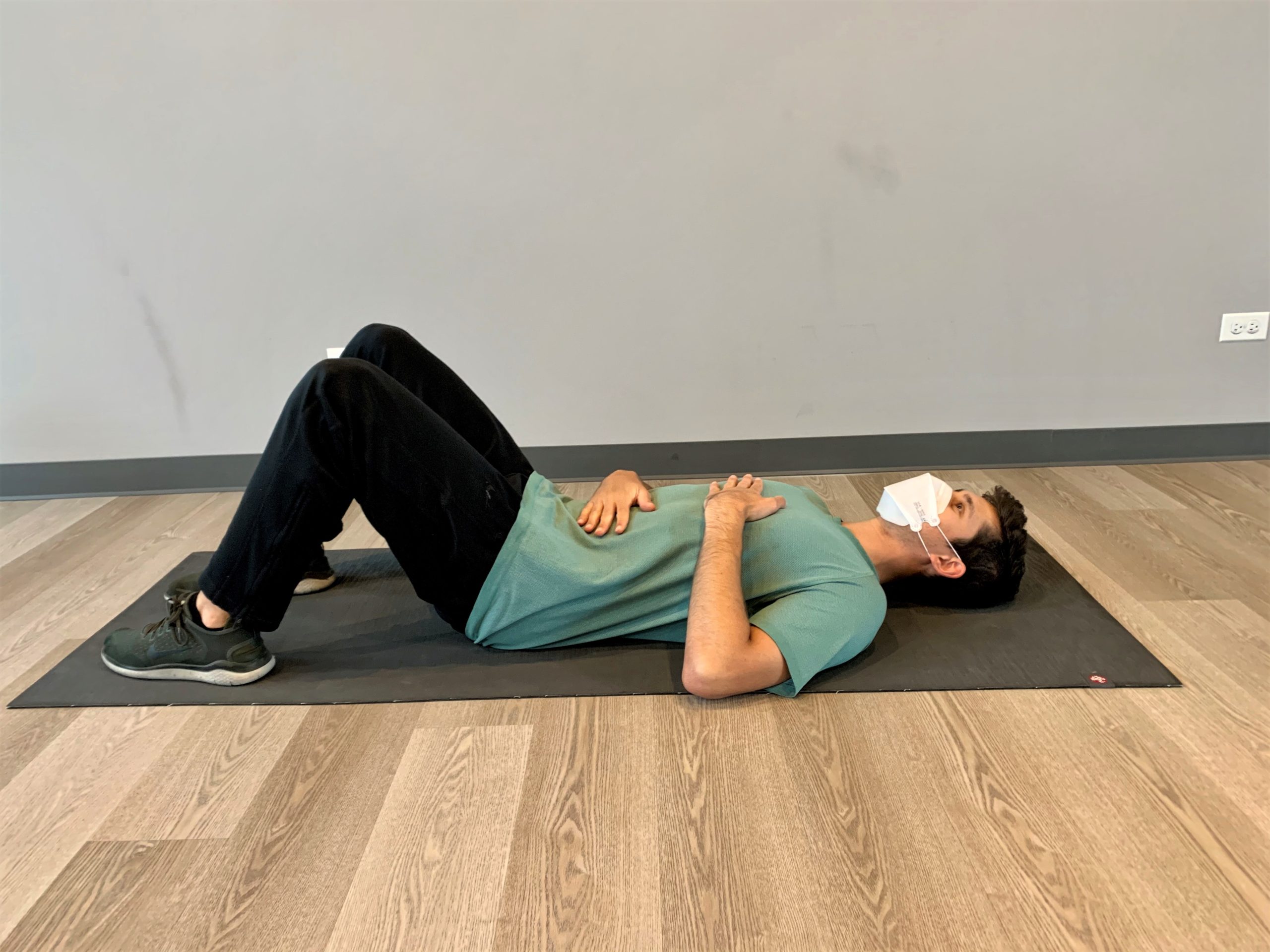Quarantine Stress and Diaphragmatic Breathing

These past few months have been stressful times. Almost everyone has been affected in some manner, with all the uncertainty surrounding the virus and community unrest. Stress will not only affect our state of mind but manifest itself in our physical state as well. It will heighten our levels of pain through neural, hormonal, and behavioral responses.
Stress triggers our sympathetic nervous system (fight or flight), which places us in a heightened sense of awareness. This sense of awareness arises from the release of adrenaline and cortisol hormones. These hormones act to increase our heart rate, breathing rate, blood pressure. These hormones are vital to the functioning of our body, but NOT at rest. Too much activation of the sympathetic nervous system for too long can result in anxiety, depression, sleep deprivation, upper back/chest/neck pain, poor digestion, weight gain, and more.
What can we do to decrease the negative effects of stress?
The answer is in our breathing! When we get stressed, often we change the manner in which we breathe. Our diaphragm, the main muscle of respiration, becomes less active. Instead, our secondary breathing muscles become dominant. Our secondary muscles of breathing are generally only meant to be active while exercising and are not designed to work all day long while we are stressed. This results in pain in the back, chest, neck, and more. Not to mention it also continues the cycle of stressing us out more.
How do we fix it?
Lie on your back. Place one hand on your belly button, while the other on your sternum. In order to properly use your diaphragm, inhale through your nose allowing ONLY your hand on your belly to rise. If you feel the hand on your chest rising, you are likely using your secondary muscles to breathe. Inhale for 4 seconds, exhale for 8 seconds.
It’s important to look after your own mental and physical well-being during this time. Start with the basics, start with breathing.